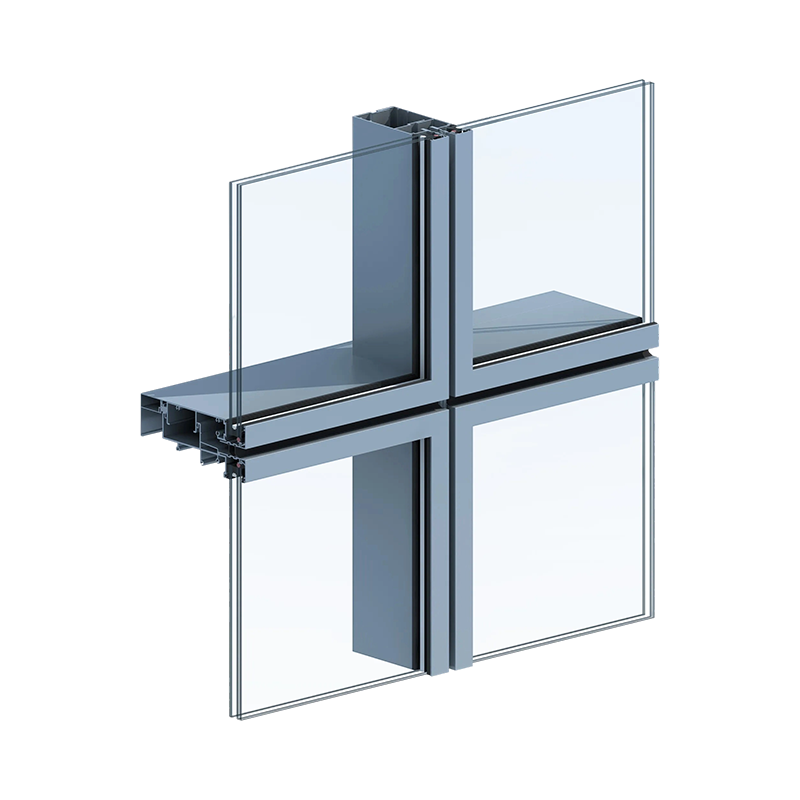Aluminum Windows: The Ultimate Guide to Alloy and Hurricane-Resistant Options
Introduction Aluminum windows have become one of the most popular choices in modern construction, offering a balance of strength, style, and practical...
Read MoreCurtain wall systems have become a defining feature of contemporary architecture. With their sleek glass facades and lightweight framing, they create striking aesthetics while allowing architects greater design flexibility. However, curtain walls are not purely decorative. One of their most important functions is improving the energy efficiency of a building. By acting as an external envelope, curtain walls regulate heat transfer, control solar gain, enhance airtightness, and optimize natural lighting. Together, these features contribute to lower energy consumption, reduced operational costs, and improved occupant comfort.
One of the primary ways curtain wall systems improve efficiency is through thermal insulation. Traditional aluminum framing, while strong and lightweight, is a good conductor of heat. Without proper design, this can lead to thermal bridging, where outdoor temperatures penetrate indoors. To address this issue, modern curtain wall frames are built with thermal breaks—insulating materials placed between interior and exterior surfaces.
These thermal barriers reduce the transfer of heat through the frame, keeping warm air inside during the winter and preventing heat gain during the summer. As a result, the building’s heating and cooling systems require less energy to maintain stable indoor temperatures, directly lowering utility bills.
Glazing selection is critical in determining the energy efficiency of curtain wall systems. Large expanses of glass can cause significant heat loss in winter and unwanted heat gain in summer if low-grade glazing is used. To solve this, high-performance glazing technologies have been developed.
By integrating these options, curtain wall systems balance transparency with insulation, ensuring that natural light is admitted without sacrificing energy performance.

Curtain walls can also act as a filter for solar radiation. Excessive sunlight not only increases cooling loads but also creates glare and discomfort for occupants. To address this, solar control solutions are incorporated directly into the curtain wall design.
These measures significantly reduce reliance on air conditioning systems, particularly in hot climates, while maintaining a comfortable indoor environment.
Air infiltration and water penetration can severely impact a building’s energy performance. Poorly sealed building envelopes allow warm or cool air to escape, forcing HVAC systems to work harder. Modern curtain wall systems are engineered with gaskets, seals, and pressure-equalized designs that ensure airtightness and watertight performance.
By minimizing uncontrolled air exchange, curtain walls reduce drafts, maintain stable indoor conditions, and prevent heat loss. This contributes directly to energy savings while also protecting the building structure from moisture-related damage.
Another way curtain wall systems contribute to energy efficiency is through daylighting. Their expansive glass surfaces maximize the entry of natural light into the building interior. This reduces the need for artificial lighting during daylight hours, significantly lowering electricity consumption.
When combined with smart interior layouts, reflective surfaces, and automated lighting controls, the daylighting benefits of curtain walls create brighter, healthier environments for occupants. Studies show that increased access to natural light improves productivity and well-being, making this a functional advantage as well as an energy-saving measure.
Modern curtain wall systems are not limited to passive energy-saving functions. Many are designed to integrate seamlessly with active green technologies.
These innovations align curtain walls with green building standards such as LEED and BREEAM, helping architects and developers meet sustainability targets.
Curtain wall systems do far more than shape the external appearance of modern buildings. They actively improve energy efficiency through thermal insulation, high-performance glazing, solar control, airtight construction, daylight optimization, and integration with renewable technologies. By lowering heating, cooling, and lighting demands, curtain walls reduce operational costs while creating more sustainable and comfortable indoor environments.
As the construction industry moves toward greener practices, the role of curtain wall systems in energy-efficient design continues to grow. From high-rise towers to commercial complexes, these advanced building envelopes are transforming architecture into a balance of form, function, and sustainability.